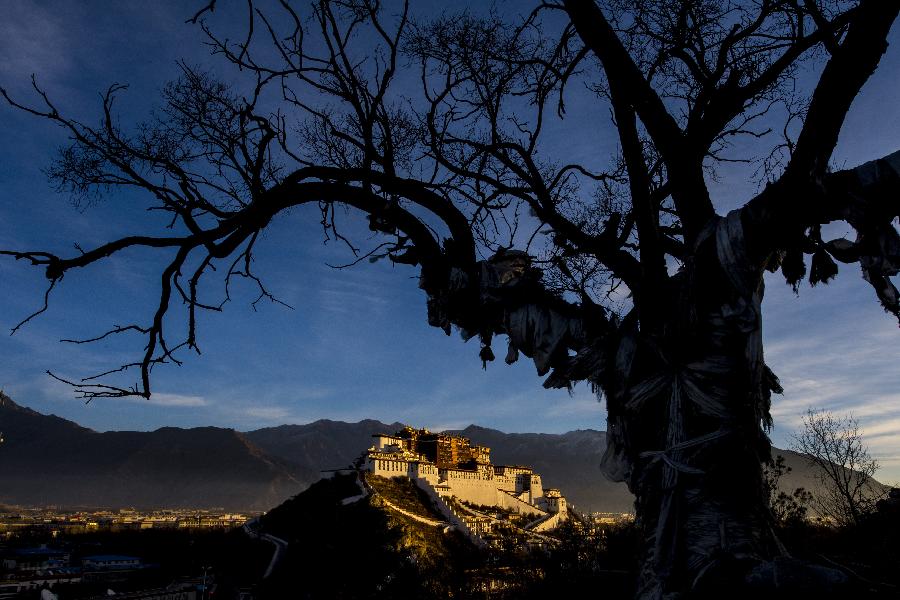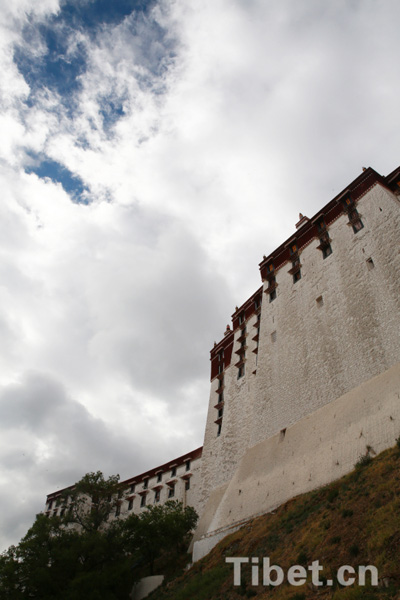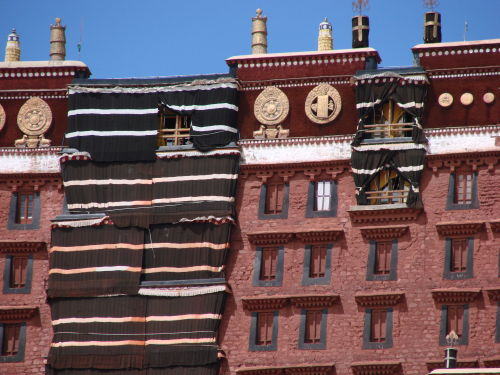Guide to Potala Palace: brief sightseeing overview

The White Palace

The White Palace [Photo/China Tibet Online]
The first part is the White Palace. The White Palace was built in 1645, and took eight years to construct. The entirety of the building's walls are painted in white which are very striking when viewed from afar; hence winning the name "White Palace".
The White Palace has seven floors, and located on the central fourth floor of the Potala Palace, which is 717 square meters, the largest sanctuary in the palace, where the generations of the Dalai Lamas were enthroned and handled the political affairs in the history.
The 5th and 6th floors are the Regent's Office and living quarters. The highest floor (the 7th floor) is the Winter Palace of the Dalai Lama since the natural lighting in the area is very bright, and as such is colloquially known as "The Hall of the Sun".
On the outside there is a wide porch, and from this position one can overlook the entire Lhasa city.
The Red Palace

The Red Palace [Photo/China Tibet Online]
The second part is the Red Palace, which was built in 1690.
The main building of the Red Palace houses many different kinds of Buddhist halls and stupas of the Dalai Lamas. Inside the palace are eight stupas of the previous Dalai Lamas, among which, the stupa of the fifth Dalai Lama is the biggest and the most aesthetically pleasing. Standing at 14.85 meters tall, the body of the stupa is wrapped in gold and a jade inlay. It is said that structure used 110,000 Chinese ounces of gold, as well as pearls, precious gemstones, coral, amber, agate, etc, all together numbering 18,677 pieces.
The primary function of the Red Palace is to serve as the location where religious and ceremonial functions are held, whereas the White Palace is the residence of the Dalai Lamas and also serves as a political administrative center.
The murals of the Potala Palace can divided into four different kinds: religious stories, depictions of ethnic culture, biographies, and depictions of historical events.
Your Comment
Name E-mailRelated News
-
;
-
-

-
Lhasa opens government service hotline 12345
Lhasa has recently opened a government service hotline 12345, Xinhua reported.
-
-
-

-
Tibet official visits Dingri and Gyirong counties
Gonpo Tashi, standing member of the party committee of the Tibet Autonomous Region, chairman of CPPCC of the Tibet Autonomous Region, party vice chair
-
-
-

-
10 photos of the week (Oct.12-18)
AfarmerdriescorncobswithherkidsatXiyiVillageofXingpingCity,northwestChina'sShaanxiProvince,Oct.2,2015.TheharvestseasoninChinaiscoloredbyripecrops.
-











